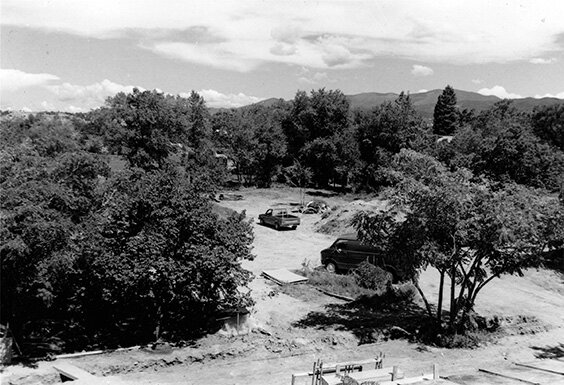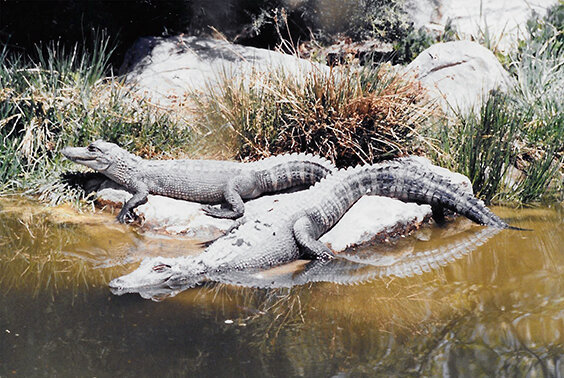Nedra Matteucci Galleries Remembers Forrest Fenn
/Forrest Fenn was a larger-than-life figure who cut a wide swath in the history of art of the American West. His efforts to generate interest in artists of the early Santa Fe & Taos art colonies, and the robust market that ensued, were accomplishments that reverberated through the art world and continue to be felt by the generations of artists and dealers who followed.
Fenn authored and published many books and catalogs on artists, including works on such notables as Joseph Henry Sharp, Leon Gaspard, Eric Sloane, and Nicolai Fechin. Following its establishment in 1972, Fenn Gallery soon became THE Santa Fe destination for art collectors and enthusiasts, who marveled at the fantastic array of paintings, sculpture, jewelry, furniture, and Native American antiques.
Nedra Matteucci & Forrest Fenn - ca. 1988
"Forrest was an amazing man. He was good at coming up with things to promote. He had a good eye and his gallery was always full of all the best of the best." said Nedra. She notes Fenn's reintroduction of Nicolai Fechin (1881-1955) to American collectors as an example of his knack for timing and seizing the moment. "Forrest was the first one to organize an exhibition of Fechin. He acquired them from Russia and got a deal with Armand Hammer to fly them all over here. That opened up that whole field."
Fenn Gallery - front room ca.1977
(note the multiple Nicolai Fechin works on display)
One aspect that distinguished both the Matteuccis and the Fenns is that each couple approached the art business from the perspective of first being collectors themselves. As Richard says, "We've been to art dealer's houses who had posters on the wall, and we're not like that. We practice what we preach."
Richard and Nedra purchased many works from Forrest, including the Fechin that almost got away. "I saw a Fechin at Forrest's, a landscape of a river. It sold soon after that, but I could never get it out of my mind. When it came on the market again, I couldn't let it go a second time. The big Leon Gaspard we have was from Forrest too."
Nedra explains that Fenn Gallery was always a family effort. "Forrest's wife Peggy was always by his side with everything. She was always right there with him and helped to build the gallery into what it has become. Forrest was the face of the business while Peggy handled all the jobs that kept the operation running. It was a wonderful partnership.”
Forrest & Peggy Fenn - ca. 1977
Nedra remembers what led to her original connection to Forrest and the daunting feeling she had when first seeing the gallery. "Richard told me he'd been offered a painting, and he said, 'why don't you go up and ask Forrest Fenn about it.' I hadn't met him, but I drove up to Santa Fe. I looked at Forrest's place. It was overwhelming, and I turned around and went back to Albuquerque. Richard sent me back up the next day to make the purchase. It was the start of a long and great relationship."
"Forrest and I became friends through the art we mutually admired. As a young dealer I was selling a lot out of my house and out of my car. I was going down to El Paso where there were a lot of collections. I worked with a little museum in town that helped put me in touch with many collectors. I was telling Forrest 'so I'm selling privately.' And he says, 'well, why don't you sell some of my art on the road for me?' I said, 'okay.' That's when my career really got going. I owe Forrest a lot for that early help."
The "Indian Room" (top: 1978, bottom: 2020)
Nedra went on to work for Forrest for several years at the Fenn Gallery before leveraging that experience in her own venture. "Forrest had me spend that first summer in the library, and I studied 10 years of American paintings and auction catalogs. I had a good memory of price, and it gave me the knowledge to know what the artist is best known for. Like if there were Indians in a painting, it was worth about three times more than a landscape, things like that. That was probably more helpful than going to college."
"Being around Forrest and watching him, I learned a whole lot. He was a great salesman and storyteller. He kept people interested all the time. Forrest had connections all over the art world and everyone you met had a Forrest Fenn story. It's too bad someone didn't keep a running track of them because that would make a book Forrest would've been proud of."
The field behind Fenn Gallery - ca. 1973
The land on which Fenn Gallery was located was originally a farm and two small homes along a dusty road following the Acequia Madre. The larger structure was the home of Nicolas Woloshuk, an early expert and dealer of the work of E.I. Couse (1866-1936). The smaller house on the property had been the home of Joseph Cestmir Svoboda (1889-1953), which Fenn and his partner Rex Arrowsmith finally purchased from the artist's daughter Olga.
Behind the buildings was a large tract owned by a man who raised vegetables for Kaune's grocery store. Fenn purchased the field, walled it in, and dug a large fishing pond. Forrest enjoyed his time fishing and feeding his pet alligators, Elvis and Beowulf. This area that was originally the back yard for Fenn's home would eventually become the gallery's famed sculpture garden under the Matteucci's ownership.
Forrest Fenn's alligators, Elvis and Beowulf - ca. 1984
Nedra describes the circumstances that led Richard and her to finally acquire the legendary gallery from Forrest in 1988. "It'd been on the market, I think maybe three or four years. Richard comes home and tells me at Thanksgiving, 'we're going to buy Fenn's if I can get the money by January 1st', and I say, 'how could you do that to me?' I think I cried for several days knowing how my life would change given the responsibility I now had to continue the legacy Forrest had created. It wasn't going to be easy but with his tutelage, I knew I could do it."
Pond in 1981 and 2020
Nedra remembers Forrest as someone who "did many good things that people didn't know about. He was really super generous in a lot of ways. He had a charitable heart, but he didn't brag about it or anything. He helped a lot of us get started. And, he did a lot for a lot of artists too." Richard added that "Forrest pieced together a hell of a thing. He had a life and a half basically. I will remember him as a friend and a good man, and I think that says a lot in today's world, I'm not sure either of them exists anymore."
With gratitude and a humble heart, we bid farewell to Forrest Fenn - whose personal journey reminds us that following your dreams leads to a rich and full life.




















